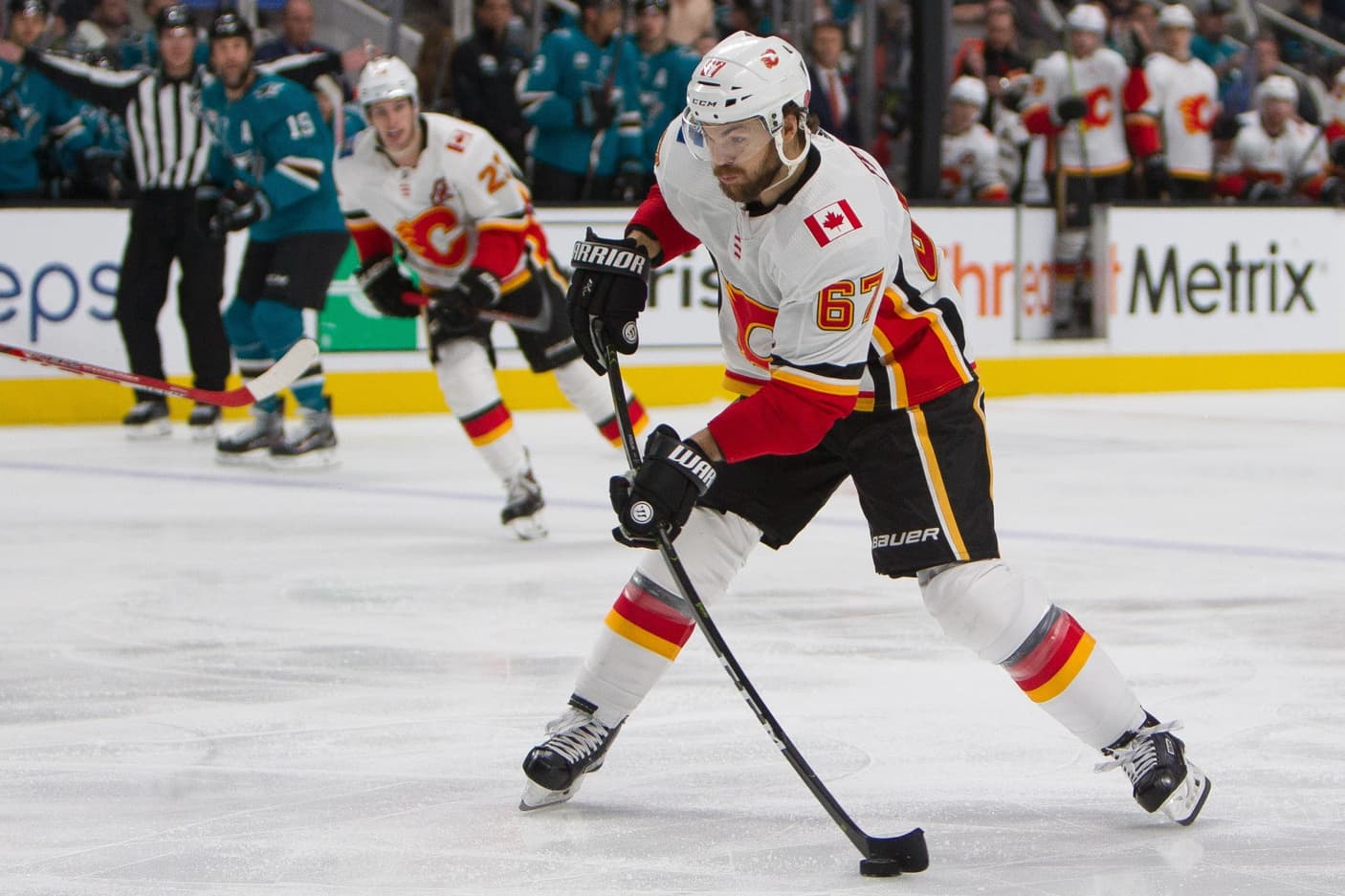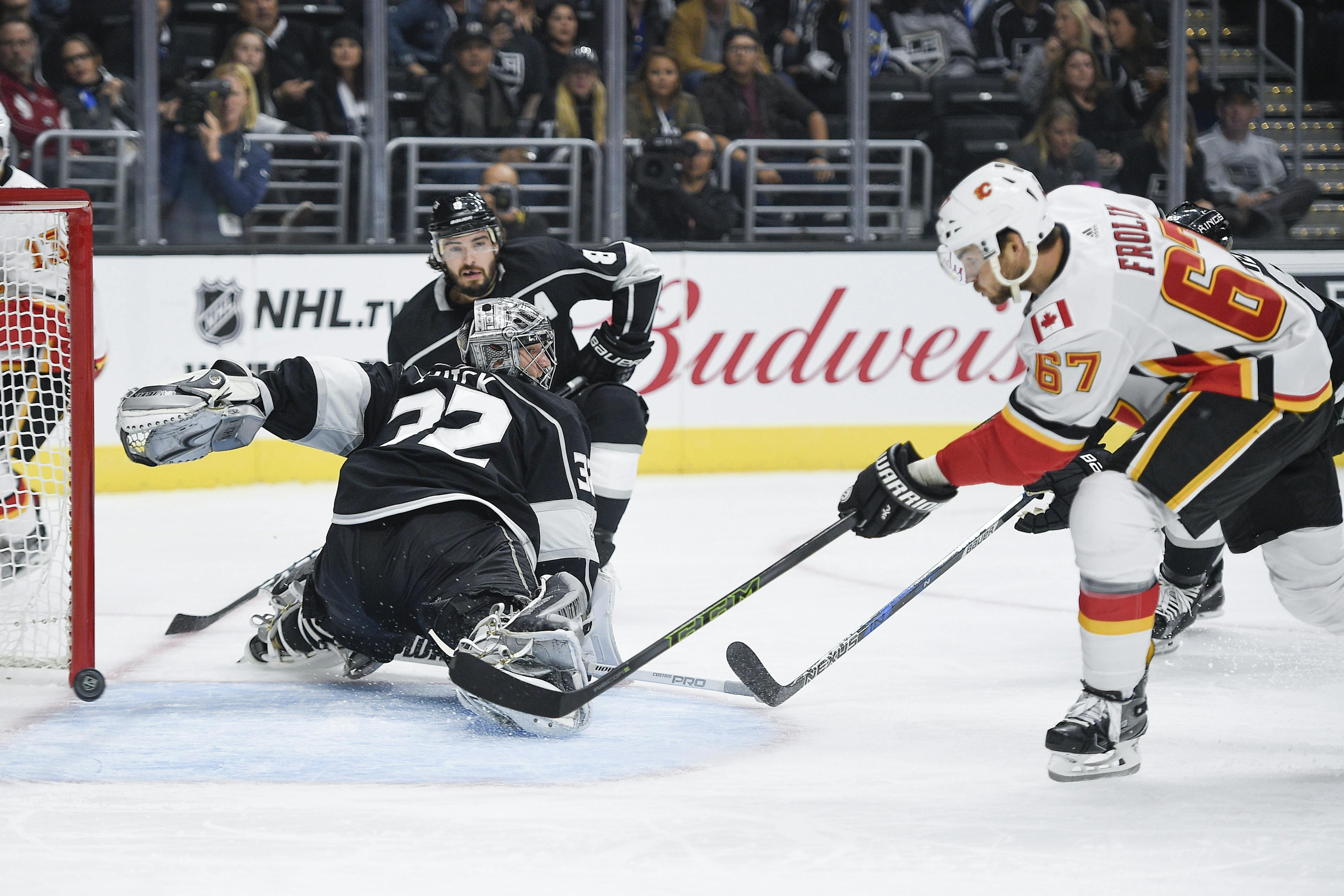Calgary faces difficult dilemma with Michael Frolik

It seems like Michael Frolik is the first Calgary Flames player that comes to mind when discussing a salary-driven trade. We all know Calgary needs to clear cap space and Frolik’s $4.3 million seems like an easy contract to move out. The problem is, Frolik has been a solid contributor over the last four years and trading him solely for cap relief seems counterproductive to the on-ice product. As such, it leaves general manager Brad Treliving with an interesting dilemma.
Four years in the books
Entering the final season of a five-year, $21.5 million contract, Frolik has been as advertised. The Flames targeted him in free agency thinking they were getting a strong two-way winger who could add secondary scoring. Frolik has delivered on both fronts.
| Season | GP | G | A | PTS |
| 2018-19 | 65 | 16 | 18 | 34 |
| 2017-18 | 70 | 10 | 15 | 25 |
| 2016-17 | 82 | 17 | 27 | 44 |
| 2015-16 | 64 | 15 | 17 | 32 |
Other than a down 2017-18 where the percentages dried up (6% SH%), Frolik has been good for around half a point per game. That’s where he was in two seasons with the Jets and in the range of what Calgary was expecting. But that’s only a fraction of why Frolik was signed. A quick look at his five-on-five underlying metrics paints an even clearer picture.
| Season | CF% | Rank | G/60 | Rank | P/60 | Rank | OZS% |
| 2018-19 | 56.3 | 2nd | 0.83 | 7th | 1.95 | 6th | 52.5 |
| 2017-18 | 56.9 | 2nd | 0.38 | 10th | 1.26 | 8th | 47.7 |
| 2016-17 | 55.6 | 2nd | 0.62 | 6th | 1.51 | 5th | 36.9 |
| 2015-16 | 51.4 | 2nd | 0.85 | 5th | 1.78 | 5th | 48.0 |
Since joining the Flames, Frolik has been a top two possession forward every single season. Paired almost exclusively with Mikael Backlund, Frolik has consistently been one of Calgary’s most effective two-way players, even in his one down year offensively.
In the other three seasons, Frolik has also been one of the team’s most productive players at five-on-five. While he doesn’t get significant powerplay time and is used more often in tough defensive situations, Frolik has regularly hovered around the top five in even strength scoring rates. That’s seems to fit the definition of secondary scoring.
Finally, Frolik has been very useful on the other side of special teams. In four seasons in Calgary, he’s averaged 1:37 per game on the penalty kill and has totalled eight shorthanded goals, more than anyone else in that same stretch. It’s tough to argue the Flames haven’t gotten what they were looking for.
The dilemma

Based on what’s been laid out above, the notion of trading Frolik would be a strange one under ideal circumstances. Of course, Calgary’s cap situation isn’t exactly ideal right now. I believe Frolik’s contract is the best one Treliving has signed in free agency, and his AAV still looks fine to me. Of course, money is a huge consideration currently and $4.3 million is a nice chunk of change.
If the Flames could find a partner willing to take on all or most of Frolik’s deal, it would open up the space needed to get Matthew Tkachuk and Andrew Mangiapane under contract. Heck, it would likely leave Calgary with a little breathing room if they wanted to make another addition later in the season.
This is where things get difficult, though. September is almost here, Tkachuk isn’t signed, and Frolik remains a member of the Flames. It’s my belief if there were a market for Frolik, he would have been moved by now. The problem is there aren’t a lot of teams lining up to lend Calgary a hand. And, in reality, there aren’t a lot of other GMs with the ability to help even if they wanted to.
Seeing the Flames offload Frolik’s $4.3 million on and getting a commensurate return seems more unlikely now than it did a few months ago. As such, it feels like Calgary would have to accept a lesser return and/or eat salary, which isn’t ideal when talking about a very useful player.
In the end, Treliving may not have any choice but to move Frolik if he wants to get Tkachuk signed. You can understand, however, if the Flames’ GM is hesitant. Calgary is smack dab in the middle of a competitive window and Frolik helps them win right now. Trading him solely for cap relief doesn’t help the on-ice product, and accepting a poor return to make it happen is even less ideal.
Therein lies the dilemma for Treliving and the Flames.
Recent articles from Pat Steinberg





